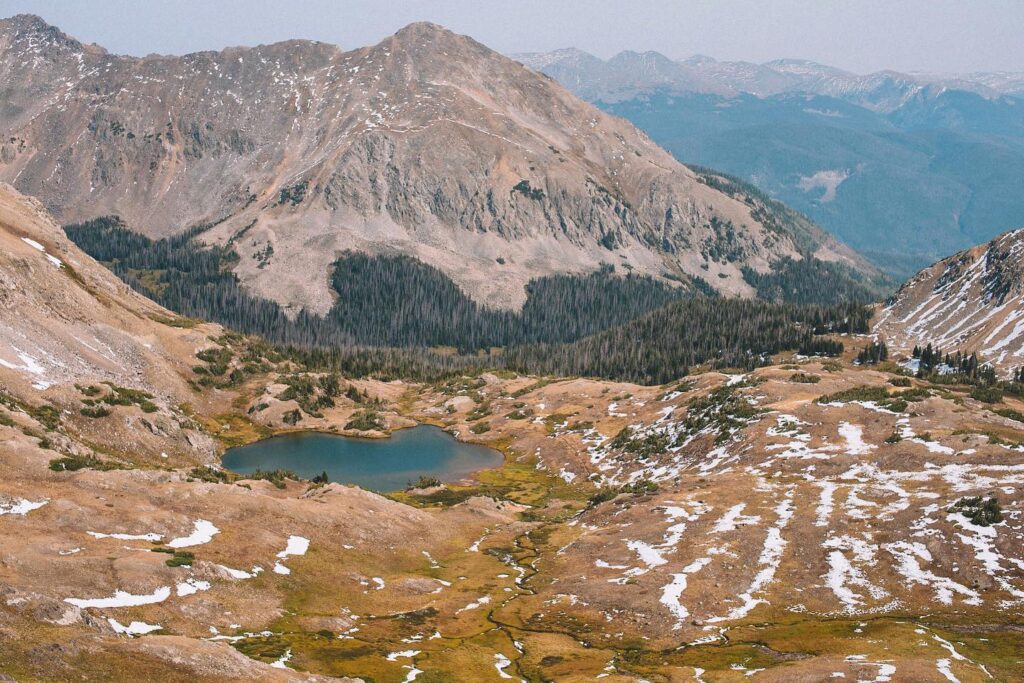6 Secret Places in Rocky Mountain National Park

With its expansive glacier-carved valleys, easily accessible tundra, abundant wildlife and thunderous waterfalls, Rocky Mountain National Park is one of the American West's must-see places. The drive over Trail Ridge Road alone is worthy of any mountain-lover's bucket list.
However, at 265,000 acres in size, the park also harbors thousands of quiet, off-the-beaten-path places that most visitors don't know about. In fact, the western side of the park in Grand County is noticeably quieter than the more frequently visited eastern side. Settle in at a campground along the Colorado River — or in one of the several resorts and lodges in and around Grand Lake — and explore the secret side of Colorado's favorite park with these six Rocky Mountain National Park hidden gems.
Note: During busier months, Rocky Mountain National Park has a timed-entry system. Check out Recreation.gov and select the date and time you would like to enter the park to make your reservation.
Rocky Mountain National Park Hidden Gems: Trails, Lakes & More
- Lake Verna & Spirit Lake
- Summerland Park
- Coyote Valley Trail
- Baker Gulch & Never Summer Wilderness
- Timber Lake
- Lulu City
1. Lake Verna & Spirit Lake
On the eastern shore of Grand Lake lies the ever-popular trail to Adams Falls. For backpackers seeking more solitude — and a calf-burning workout — head 7 miles up the East Inlet Trail to Lake Verna. Surrounded by forest and crowned by a distant yet imposing granite wall, Lake Verna's jewel-like surface is an unparalleled scenic reward after a challenging hike. After setting up at the backcountry campsite adjacent to Lake Verna, follow the trail up to Spirit Lake to catch the sunset.
Access: Strenuous hiking. 7 miles one way, roughly 2,000 feet in elevation gain.
2. Summerland Park
For a quiet picnic among aspens and pine, head to Summerland Park just northeast of Grand Lake. Here, open meadows and stands of willow along North Inlet Creek offer great habitat for moose, elk, deer and several species of wildflowers. After your picnic, head out for a hike on the Summerland Park trail. The 3.3-mile loop begins as a wide dirt road before heading into the forest to become a relatively easy hiking trail running along the Tonahutu Creek and through towering aspens.
Access: Drive-in 1.7 miles to trailhead and park.
3. Coyote Valley Trail
This short, accessible walking path through the open meadows of the Kawuneeche Valley is best enjoyed around sunset in the summer, when birds, moose and elk are most active (and day-trippers are long gone). The Coyote Valley Trail closely follows the Colorado River and offers expansive views of the nearby Never Summer Mountains. Just short of a mile, the path is wheelchair accessible, includes several rest stops, and is clearly marked on Trail Ridge Road.
Access: Easy hiking. 3/4-mile loop, with minimal elevation gain.
Photo Credit: National Park Service
4. Baker Gulch & Never Summer Wilderness
For those willing to put in the effort, the hike up Baker Gulch to Parika Lake will leave an indelible memory. Elk, moose, black bear and even bobcats call this quiet valley home (the first two are frequently spotted, the latter two make their presence known with tracks on the trail). Located in the Never Summer Wilderness, Parika Lake offers an unusual view of Longs Peak some 20 miles away. Note: The trailhead is in the park, but the path leaves the park boundaries and enters National Forest land in short order.
Access: Strenuous hiking. 5 miles one way, roughly 2,500 feet in elevation gain.
5. Timber Lake
Further up Trail Ridge Road — but just shy of the first hairpin curve — lies the trailhead for Timber Lake. Climbing steadily through the forest, the hiking trail leads visitors to an open alpine basin underneath 12,889-foot Mount Ida. Several backcountry camping sites are available (inquire with the National Park Service) making this a wonderful place to witness a summertime meteor shower.
Access: Fairly strenuous hiking. 4.6 miles one way, roughly 2,000 feet in elevation gain.
6. Lulu City
Hiking to Lulu City — an abandoned ghost town — is one of the most fascinating activities in the park. First established in 1879, the mining settlement boomed for a short time before it was abandoned just five years later. Hikers can see ancient cabins, old foundations and read interpretive signage. As you climb to it, you may be astonished to learn that the humble creek it follows is actually the Colorado River. This trail eventually leads to the mighty river's headwaters, near Poudre Pass.
Access: Moderate hiking. 3.7 miles one way, roughly 600 feet in elevation gain.
Rocky Mountain National Park Hikes: Know Before You Go
Before you head out on your hike in Rocky Mountain National Park, make sure you know how to navigate the area and protect the trails. Care for Colorado Leave No Trace Principles outline some best practices for outdoor adventure in Colorado. Remember to stay on designated paths, never disturb wildlife and always pack out everything you bring with you.
Seasonal conditions like snow and ice may impact access to certain Rocky Mountain National Park hikes and trails. Check out the park’s webpage before your trip to ensure trails are open and safe.
More About Rocky Mountain National Park Lakes, Trails & Hikes
Looking for more information for your trip to Rocky Mountain National Park? Check out these helpful resources:
